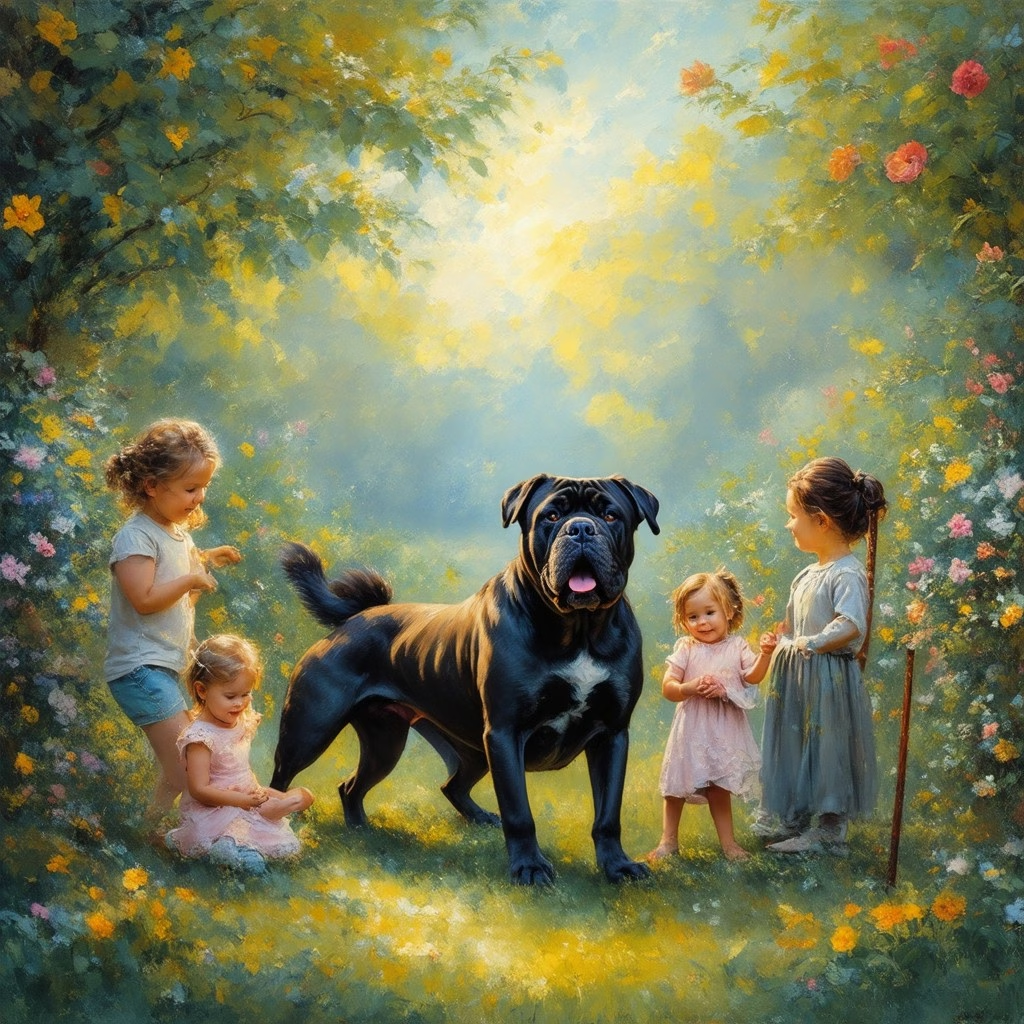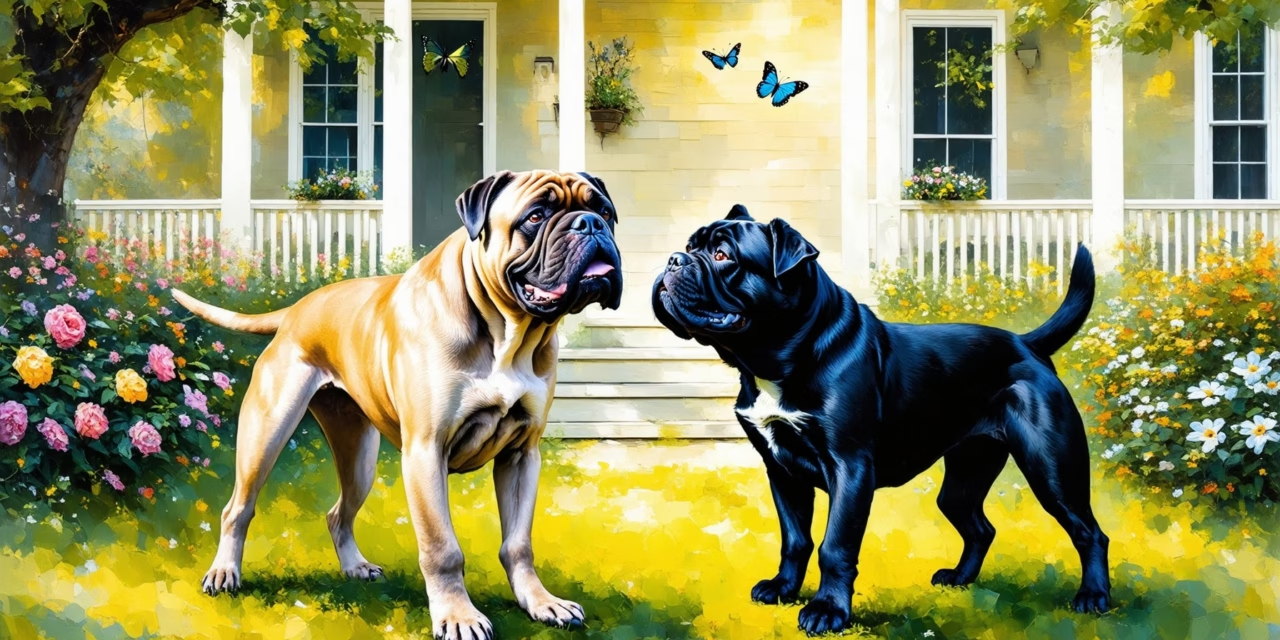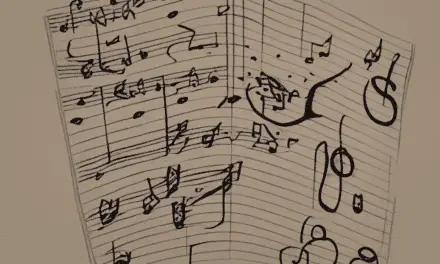Key Takeaways
- Neapolitan Mastiffs are loyal family companions, known for their affectionate nature and strong bonds with owners, making them ideal for families.
- Protective instincts enhance their role as guardians, providing security but requiring responsible management to prevent over-aggression.
- Low-energy requirements make them suitable for relaxed households, as they enjoy lounging and need less exercise than many large breeds.
- Early socialization and consistent training are crucial for developing a well-adjusted Neapolitan Mastiff, helping mitigate stubbornness and potential aggression.
- Size considerations should be taken into account, as their large stature may pose challenges in homes with small children.
- Comparing Neapolitan Mastiffs to Cane Corsos reveals differences in energy levels, trainability, and exercise needs, guiding families in their choice of breed.
- Health considerations are vital; prospective owners should be aware of common issues like hip dysplasia and bloat, emphasizing the importance of choosing reputable breeders.
Choosing the right companion for your family is a significant decision, and understanding the Neapolitan Mastiff is essential for any potential dog owner. Known for their impressive size and gentle demeanor, Neapolitan Mastiffs can make excellent family dogs when matched with the right environment and training. In this article, we will explore the temperament of the Neapolitan Mastiff, comparing it to the Cane Corso to help you determine which breed might be the best fit for your household. We will delve into key aspects such as the differences and similarities between these two majestic breeds, the costs associated with acquiring a Neapolitan Mastiff puppy, and important considerations regarding their health and temperament. Additionally, we will address common concerns about aggression and provide insights into the lifespan and care of these magnificent dogs. Whether you’re considering a Neapolitan Mastiff for sale or simply curious about this breed, our comprehensive guide will equip you with the knowledge needed to make an informed choice.
Is a Neapolitan Mastiff a good family dog?
Neapolitan Mastiffs can be a good family dog, but their suitability largely depends on the family’s lifestyle and experience with large breeds. Here are key considerations:
- Loyal and Affectionate: Neapolitan Mastiffs are known for their loyalty and affection towards their families. They often form strong bonds with their designated “people,” making them loving companions.
- Protective Nature: Their natural guarding instincts make them excellent protectors of the home and family. This protective nature can provide a sense of security, but it requires responsible management to prevent over-aggression.
- Low-Energy Requirements: Neapolitan Mastiffs are generally low-energy dogs. They are content to lounge around the house and require less exercise compared to many other large breeds, making them suitable for families with a more relaxed lifestyle.
- Intelligence and Trainability: While they possess a stubborn streak, Neapolitan Mastiffs are intelligent and can be trained effectively with consistent positive reinforcement techniques. Training should start early to establish good behavior patterns.
- Compatibility with Older Children: When properly socialized and trained, Neapolitan Mastiffs can be gentle and playful with older children. However, supervision is essential to ensure safe interactions, especially given their size.
- Size Considerations: Their large size can pose challenges, particularly around small children. They may unintentionally knock over younger kids during play, so families with toddlers should exercise caution.
- Guard Dog Instincts: While their protective instincts are beneficial, they can lead to aggression towards strangers or other dogs if not managed properly. Early socialization and training are crucial to mitigate these tendencies.
- Stubbornness and Leadership: Neapolitan Mastiffs can be independent and stubborn, requiring an owner who can provide strong leadership. Consistent training and clear boundaries are essential for a well-adjusted dog.
- Importance of Socialization: Early and ongoing socialization is vital for Neapolitan Mastiffs to develop into well-adjusted dogs. Exposure to various people, environments, and situations will help them become more comfortable and less reactive.
In summary, while Neapolitan Mastiffs can be excellent family dogs, they require experienced owners who can provide strong leadership, consistent training, and proper socialization to thrive in a family environment. For more information on training and behavior, resources such as the American Kennel Club offer valuable insights.
Understanding the Neapolitan Mastiff temperament
The temperament of the Neapolitan Mastiff is a blend of loyalty, protectiveness, and a calm demeanor. These dogs are known for their affectionate nature towards family members, making them excellent companions. However, their temperament can vary based on individual upbringing and socialization. Here are some key traits:
- Affectionate Companions: Neapolitan Mastiffs thrive on companionship and often seek to be close to their families.
- Natural Guardians: Their protective instincts make them wary of strangers, which can be beneficial for home security.
- Calm and Composed: Generally, they exhibit a calm demeanor, preferring to observe rather than engage in excessive activity.
- Stubbornness: This breed can be quite independent, which may lead to challenges in training if not approached with consistency and patience.
Understanding these traits is crucial for potential owners to ensure a harmonious relationship with their Neapolitan Mastiff.
Comparing Neapolitan Mastiff and Cane Corso as family dogs
When considering family dogs, the Neapolitan Mastiff and Cane Corso often come up in discussions due to their similarities and differences. Both breeds share a lineage and exhibit protective traits, but they also have distinct characteristics that may influence a family’s choice:
- Size and Build: Neapolitan Mastiffs are generally larger and bulkier than Cane Corsos, which may affect their suitability for families with small children.
- Temperament: While both breeds are loyal, the Cane Corso tends to be more energetic and trainable, making them potentially easier for active families.
- Protectiveness: Both breeds are protective, but the Neapolitan Mastiff’s guarding instincts can be more pronounced, requiring careful management.
- Exercise Needs: Cane Corsos typically require more exercise than Neapolitan Mastiffs, making them better suited for families with an active lifestyle.
Ultimately, the choice between a Neapolitan Mastiff and a Cane Corso should be based on the family’s lifestyle, experience with large breeds, and the specific traits they value in a family dog.

Is Cane Corso Same as Neapolitan Mastiff?
The Cane Corso and the Neapolitan Mastiff are both breeds within the Molosser family, but they exhibit distinct characteristics that set them apart.
Key Differences Between Cane Corso and Neapolitan Mastiff Breeds
- Physical Appearance: The Cane Corso is known for its athletic build, featuring a well-defined musculature and a height ranging from 24 to 28 inches at the shoulder. Weighing between 90 to 120 pounds, it has a sleek, powerful appearance that emphasizes agility. In contrast, the Neapolitan Mastiff is characterized by its massive, heavyset structure. Standing between 24 to 30 inches tall and weighing from 110 to 150 pounds, it has loose skin and prominent wrinkles, giving it a more imposing and “bestial” look.
- Temperament: Cane Corsos are often described as loyal, protective, and intelligent. They require consistent training and socialization to thrive as family companions and guardians. Neapolitan Mastiffs, while also loyal, tend to be more laid-back and can be more stubborn in training. Their protective nature is strong, but they may be less active than the Cane Corso.
- Exercise Needs: The Cane Corso thrives on regular exercise and mental stimulation, making it suitable for active families or individuals who can provide ample physical activity. The Neapolitan Mastiff, due to its bulk, requires less intense exercise but still benefits from daily walks and playtime to maintain a healthy weight.
- Health Considerations: Both breeds are prone to certain health issues. Cane Corsos may face hip dysplasia and certain heart conditions, while Neapolitan Mastiffs are at risk for skin issues and bloat due to their body structure. Regular veterinary check-ups and a balanced diet are essential for both breeds.
In summary, while the Cane Corso and Neapolitan Mastiff share a common ancestry as Molossers, their differences in physical appearance, temperament, exercise needs, and health considerations make them unique. Understanding these distinctions is crucial for potential owners to choose the breed that best fits their lifestyle and preferences. For more detailed insights on dog breeds and their care, resources such as the American Kennel Club can provide authoritative information.
Similarities in Appearance and Behavior of Cane Corso and Neapolitan Mastiff
Despite their differences, the Cane Corso and Neapolitan Mastiff share several similarities that may appeal to potential dog owners.
- Guarding Instincts: Both breeds possess strong guarding instincts, making them excellent protectors of their families and homes. Their imposing size and confident demeanor can deter intruders.
- Loyal Companionship: Cane Corsos and Neapolitan Mastiffs are known for their loyalty to their families. They thrive on companionship and often form strong bonds with their owners, making them affectionate family pets.
- Training Needs: While their temperaments differ, both breeds benefit from early socialization and consistent training. This helps them develop into well-mannered companions and reduces the likelihood of behavioral issues.
- Health Monitoring: Owners of both breeds should be vigilant about health monitoring. Regular veterinary visits and a proper diet are essential to maintain their overall well-being and longevity.
Understanding these similarities can help potential owners appreciate the unique qualities of both breeds. For those considering a Neapolitan Mastiff or a Cane Corso, it’s important to weigh these factors carefully to ensure a good match for their lifestyle.
How much does a Neapolitan Mastiff cost in the US?
The cost of a Neapolitan Mastiff in the United States typically ranges from $1,500 to $2,500 for puppies. However, prices can escalate to over $5,000 based on factors such as lineage, breeder reputation, and geographical location. When purchasing a Neapolitan Mastiff, it is crucial to seek reputable breeders who prioritize health and temperament screening. The American Kennel Club (AKC) website is an excellent resource for finding certified breeders. A well-bred Neapolitan Mastiff often comes with pedigree papers, ensuring that you are investing in a dog with a strong genetic background.
Additionally, potential owners should consider the long-term costs associated with caring for a Neapolitan Mastiff, which includes food, grooming, veterinary care, and training. This breed is known for its loyalty and protective nature, making it essential to provide proper socialization and training from an early age.
For more detailed insights into breed characteristics and care, resources such as the AKC and veterinary publications can offer valuable information. Investing in a Neapolitan Mastiff is not just about the initial purchase price; it involves a commitment to their health and well-being throughout their life.
Breakdown of Neapolitan Mastiff price and factors influencing cost
The price of a Neapolitan Mastiff can vary significantly based on several factors. First, the breeder’s reputation plays a crucial role; established Neapolitan Mastiff breeders often charge more due to their commitment to quality and health standards. Second, the dog’s lineage can influence the price, especially if the puppy comes from champion bloodlines. Third, geographical location affects costs; puppies in urban areas may be priced higher due to demand.
Moreover, the color of the Neapolitan Mastiff can also impact the price. For instance, rare colors like the blue Neapolitan Mastiff may command a premium. It’s essential to research and compare prices from various breeders to ensure you are making an informed decision. Always prioritize health and temperament over cost when selecting a Neapolitan Mastiff puppy.
Where to find Neapolitan Mastiff puppies for sale
Finding a Neapolitan Mastiff puppy for sale requires careful consideration and research. The best starting point is the AKC Marketplace, which lists reputable breeders who adhere to strict breeding standards. Additionally, websites like Petfinder can help locate Neapolitan Mastiff puppies for adoption, providing an opportunity to give a home to a dog in need.
Local breed clubs and dog shows can also be excellent resources for connecting with Neapolitan Mastiff breeders and learning more about the breed. Always ensure that any breeder you consider is transparent about their breeding practices and willing to provide health clearances for their puppies. This diligence will help ensure that you bring home a healthy and well-adjusted Neapolitan Mastiff dog.
What are the disadvantages of a Neapolitan Mastiff?
The Neapolitan Mastiff, while a beloved breed, comes with several disadvantages that potential owners should consider. These include:
- Health Issues: Neapolitan Mastiffs are prone to various breed-specific health concerns, such as:
- Hip and Elbow Dysplasia: This genetic condition affects the joints, leading to pain and mobility issues. Regular veterinary check-ups and maintaining a healthy weight can help manage these risks (American Kennel Club).
- Cherry Eye: This condition occurs when the gland in the eye bulges out, requiring surgical intervention to correct (Veterinary Partner).
- Cardiomyopathy: A serious heart condition that can lead to heart failure. Regular veterinary screenings are essential for early detection (Veterinary Clinics of North America).
- Gastric Torsion (Bloat): This life-threatening condition occurs when the stomach twists, trapping gas and food. Preventative measures include feeding smaller meals and avoiding vigorous exercise after eating (PetMD).
- Demodectic Mange: A skin condition caused by mites that can lead to hair loss and skin infections. Treatment often involves medicated baths and topical treatments (Veterinary Dermatology).
- Fold Dermatitis: The skin folds of the Neapolitan Mastiff can trap moisture and debris, leading to infections. Regular cleaning of the folds is crucial to prevent this issue (The Merck Veterinary Manual).
- Shorter Lifespan: The average lifespan of a Neapolitan Mastiff is around 7 to 9 years, which is shorter compared to many other breeds. This can be attributed to their size and associated health risks (Petfinder).
- Space Requirements: Due to their large size, Neapolitan Mastiffs require ample space to move around comfortably. They may not be suitable for small living environments or apartments.
- Training Challenges: This breed can be stubborn and may require consistent, positive reinforcement training methods. Early socialization and obedience training are essential to ensure they develop into well-mannered companions (American Kennel Club).
- Cost of Care: The cost of owning a Neapolitan Mastiff can be significant, including food, veterinary care, and potential medical treatments for breed-specific issues. Prospective owners should be prepared for these financial commitments.
Understanding these disadvantages is crucial for anyone considering adding a Neapolitan Mastiff to their family. Proper care, training, and regular veterinary visits can help mitigate some of these issues, ensuring a healthier and happier life for your pet.
Common challenges of owning a Neapolitan Mastiff dog
Owning a Neapolitan Mastiff dog comes with unique challenges that potential owners should be aware of:
- Shedding and Grooming: Neapolitan Mastiffs have short coats but shed year-round. Regular brushing is necessary to manage loose hair and maintain coat health.
- Socialization Needs: Early socialization is vital for this breed to prevent overly protective behavior. Exposing them to various environments, people, and other animals can help them develop a balanced temperament.
- Exercise Requirements: While they are not as high-energy as some breeds, Neapolitan Mastiffs still require regular exercise to maintain a healthy weight and prevent boredom-related behaviors.
Considerations for potential Neapolitan Mastiff breeders
When looking for Neapolitan Mastiff breeders, consider the following:
- Reputation: Research breeders thoroughly. Look for those who are reputable and have a history of producing healthy puppies. Websites like AKC Marketplace can be a good starting point.
- Health Testing: Ensure that breeders conduct health testing for common breed-specific issues. This can include hip evaluations and heart screenings.
- Environment: Visit the breeding facility if possible. A clean, safe, and nurturing environment is crucial for the well-being of the puppies.
- Support: A good breeder will offer ongoing support and guidance even after the sale, helping new owners navigate the challenges of raising a Neapolitan Mastiff.

How Aggressive is Neapolitan Mastiff?
The Neapolitan Mastiff, known for its impressive size and protective instincts, is a breed that embodies loyalty and guardianship. While some may perceive them as aggressive, it is essential to understand their temperament in context. This breed is inherently calm and composed, displaying a steady demeanor. They are not prone to aggression without provocation; instead, they are known for their protective nature towards their family and property.
Understanding the Bite Force of Neapolitan Mastiff
The bite force of a Neapolitan Mastiff is one of the strongest among dog breeds, often cited as being over 500 PSI (pounds per square inch). This formidable strength is a testament to their physical capabilities and protective instincts. However, it is crucial to recognize that a strong bite does not equate to aggression. Neapolitan Mastiffs are generally gentle giants, especially with their families. Proper training and socialization can help ensure that their powerful bite is never used aggressively. For more information on dog bite force and safety, you can refer to PetMD.
Factors That Influence Aggression in Neapolitan Mastiffs
Several factors can influence the behavior of Neapolitan Mastiffs, including:
- Socialization: Early exposure to various environments, people, and other animals is crucial. This helps mitigate any potential for aggressive behavior.
- Training: Consistent training using positive reinforcement methods is recommended to establish boundaries and reinforce good behavior. According to the American Kennel Club, training should begin early to ensure a well-adjusted adult dog.
- Protective Instincts: As natural guardians, Neapolitan Mastiffs will instinctively protect their home and family. This protective nature can sometimes be misinterpreted as aggression, particularly if they perceive a threat.
- Health and Well-being: Maintaining the physical and mental health of a Neapolitan Mastiff is vital. Regular exercise, a balanced diet, and mental stimulation can contribute to a well-rounded temperament.
By understanding and nurturing the Neapolitan Mastiff’s natural tendencies, owners can foster a loving and secure environment that minimizes the risk of aggressive behavior. For further insights into dog behavior and training, resources from the American Kennel Club and the United States Neapolitan Mastiff Club can provide valuable information.
What is the calmest Mastiff?
The calmest Mastiff breed is widely considered to be the Spanish Mastiff. Known for their gentle and laid-back temperament, Spanish Mastiffs are excellent family companions. They are particularly noted for their loyalty and protective nature, making them ideal for families with children.
Comparing the calmness of Neapolitan Mastiff with other Mastiff breeds
When comparing the Neapolitan Mastiff with other Mastiff breeds, such as the Spanish Mastiff and the Bullmastiff, it’s essential to consider their temperaments. The Neapolitan Mastiff is known for its calm demeanor, but it can also exhibit protective instincts, making it a loyal guardian for families. While the Neapolitan Mastiff is generally calm, it may not be as consistently laid-back as the Spanish Mastiff, which is bred specifically for a gentle temperament.
In contrast, the Bullmastiff is also known for its calm nature but can be more energetic than the Neapolitan Mastiff. Each breed has unique characteristics, but the Neapolitan Mastiff stands out for its affectionate nature and strong bond with family members. For those considering a Neapolitan Mastiff, understanding these differences can help in making an informed decision.
Tips for training a calm Neapolitan Mastiff
Training a calm Neapolitan Mastiff requires patience and consistency. Here are some effective tips to ensure your Neo Mastiff develops a calm demeanor:
- Early Socialization: Introduce your Neapolitan Mastiff puppy to various environments, people, and other animals to build confidence and reduce anxiety.
- Positive Reinforcement: Use treats and praise to reward calm behavior. This encourages your dog to associate positive experiences with being calm.
- Regular Exercise: Ensure your Neapolitan Mastiff gets daily walks and playtime. Physical activity helps reduce excess energy, contributing to a calmer disposition.
- Consistent Routine: Establish a daily routine for feeding, walks, and training sessions. Predictability can help your dog feel secure and calm.
- Professional Training: Consider enrolling in obedience classes with a trainer experienced in working with large breeds. This can provide valuable guidance and support.
By implementing these training tips, you can foster a calm and well-adjusted Neapolitan Mastiff, making them a wonderful addition to your family. For more information on Neapolitan Mastiff care, check out Dog Breeds and Care.
Neapolitan Mastiff lifespan and health considerations
The lifespan of a Neapolitan Mastiff typically ranges from 7 to 10 years. This breed is known for its robust build and protective nature, but like all dogs, they are susceptible to certain health issues. Understanding these health considerations is crucial for potential owners to ensure a long, healthy life for their neapolitan mastiff.
Average lifespan of Neapolitan Mastiff and common health issues
As mentioned, the average lifespan of a neapolitan mastiff is about 7 to 10 years. Common health issues that may affect this breed include:
- Hip Dysplasia: A genetic condition where the hip joint doesn’t fit into the hip socket properly, leading to arthritis and pain.
- Elbow Dysplasia: Similar to hip dysplasia, this condition affects the elbow joint and can cause lameness.
- Cardiac Issues: Neapolitan Mastiffs are prone to heart problems, including dilated cardiomyopathy.
- Skin Conditions: Their loose skin can lead to infections and irritations if not properly cared for.
- Gastric Dilatation-Volvulus (Bloat): A serious condition that can occur in deep-chested breeds like the neo mastiff.
Regular veterinary check-ups and a balanced diet can help mitigate these health risks. For more detailed information on health considerations, visit Health Considerations for Pets.
Importance of choosing reputable Neapolitan Mastiff breeders for longevity
Choosing a reputable neapolitan mastiff breeder is essential for ensuring the health and longevity of your dog. Responsible breeders conduct health screenings and genetic testing to minimize the risk of hereditary conditions. When looking for neapolitan mastiff puppies for sale, consider the following:
- Health Testing: Ensure that the breeder tests for common health issues associated with the breed.
- Breeder Reputation: Research the breeder’s reputation through reviews and testimonials.
- Socialization Practices: A good breeder will expose puppies to various environments and experiences to promote healthy development.
- Support and Guidance: Reputable breeders provide ongoing support and guidance to new owners.
For a list of trusted breeders, you can visit the American Kennel Club website. Ensuring you select a responsible breeder can significantly impact your neapolitan mastiff’s health and lifespan.













